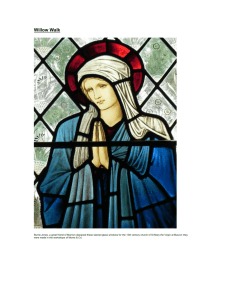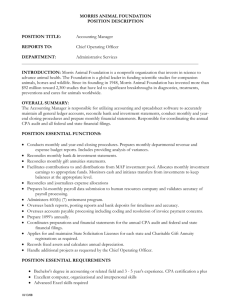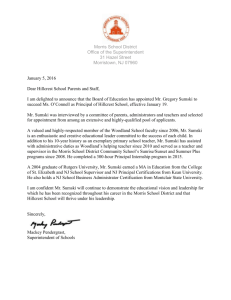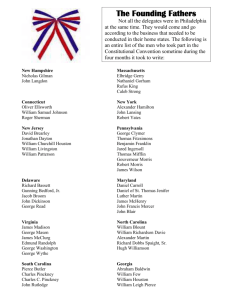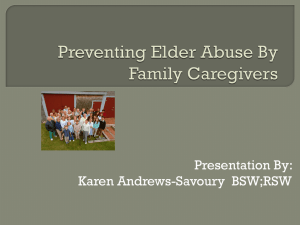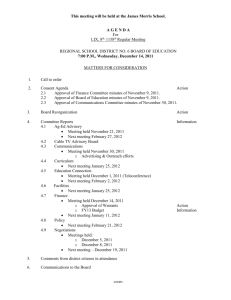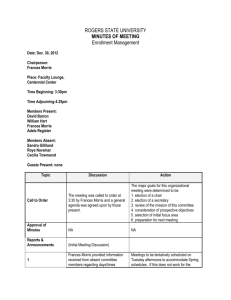Topics in Textual Studies and Book History
advertisement
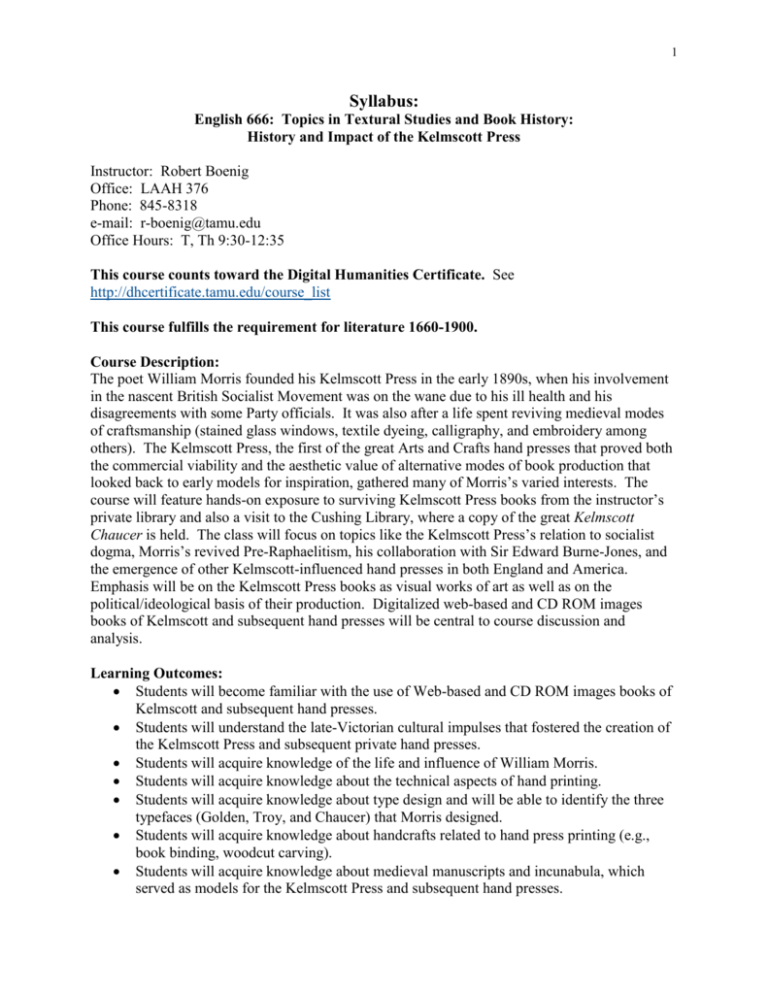
1 Syllabus: English 666: Topics in Textural Studies and Book History: History and Impact of the Kelmscott Press Instructor: Robert Boenig Office: LAAH 376 Phone: 845-8318 e-mail: r-boenig@tamu.edu Office Hours: T, Th 9:30-12:35 This course counts toward the Digital Humanities Certificate. See http://dhcertificate.tamu.edu/course_list This course fulfills the requirement for literature 1660-1900. Course Description: The poet William Morris founded his Kelmscott Press in the early 1890s, when his involvement in the nascent British Socialist Movement was on the wane due to his ill health and his disagreements with some Party officials. It was also after a life spent reviving medieval modes of craftsmanship (stained glass windows, textile dyeing, calligraphy, and embroidery among others). The Kelmscott Press, the first of the great Arts and Crafts hand presses that proved both the commercial viability and the aesthetic value of alternative modes of book production that looked back to early models for inspiration, gathered many of Morris’s varied interests. The course will feature hands-on exposure to surviving Kelmscott Press books from the instructor’s private library and also a visit to the Cushing Library, where a copy of the great Kelmscott Chaucer is held. The class will focus on topics like the Kelmscott Press’s relation to socialist dogma, Morris’s revived Pre-Raphaelitism, his collaboration with Sir Edward Burne-Jones, and the emergence of other Kelmscott-influenced hand presses in both England and America. Emphasis will be on the Kelmscott Press books as visual works of art as well as on the political/ideological basis of their production. Digitalized web-based and CD ROM images books of Kelmscott and subsequent hand presses will be central to course discussion and analysis. Learning Outcomes: Students will become familiar with the use of Web-based and CD ROM images books of Kelmscott and subsequent hand presses. Students will understand the late-Victorian cultural impulses that fostered the creation of the Kelmscott Press and subsequent private hand presses. Students will acquire knowledge of the life and influence of William Morris. Students will acquire knowledge about the technical aspects of hand printing. Students will acquire knowledge about type design and will be able to identify the three typefaces (Golden, Troy, and Chaucer) that Morris designed. Students will acquire knowledge about handcrafts related to hand press printing (e.g., book binding, woodcut carving). Students will acquire knowledge about medieval manuscripts and incunabula, which served as models for the Kelmscott Press and subsequent hand presses. 2 Students will understand the place of hand press printing in the Arts and Crafts Movement of the late nineteenth and early twentieth centuries. Texts (boldface in print and to be purchased; boldface and italics to be purchased used): 1. Fiona MacCarthy, William Morris: A Life for Our Times (Faber Paperbacks, 1995, rpt. 1998) (Purchase used at Amazon.com or similar venue) ISBN-10: 0571174957 OR ISBN13: 978-0571174959 (also on reserve, PR5083 .M23 1995) 2. William S. Peterson, The Kelmscott Press: A History of William Morris's Typographical Adventure (on reserve at Cushing Library, Z232.M87 P45 1991) 3. William S. Peterson and Sylvia Holton Peterson, The Kelmscott Chaucer: A Census (digital download from Amazon.com or on reserve at Cushing Library PR1851 .E452 2011) 4. Duncan Robinson, William Morris, Edward Burne-Jones, and the Kelmscott Chaucer (on reserve, Z232.M87 R6 1982) 5. Colin Franklin, Private Presses Littlehampton Book Services Ltd (March 1969) (on reserve, Z231.5.P7 F7) 6. H. Halliday Sparling and Sydeny Cockerell, The Kelmscott Press and William Morris Master-Craftsman Nabu Press ISBN-10: 1178765539 OR ISBN-13: 978-1178765533 7. William Morris, The Wood Beyond the World, ed. Robert Boenig (Broadview Press, 2010) ISBN-13: 9781551119823 OR ISBN-10155111982X 8. William Morris, The Glittering Plain (Dover Publishing, 1987) (Purchase used at Amazon.com or AbeBooks.com or similar venue) ISBN-10: 0486254674 OR ISBN-13: 978-0486254678. This is a facsimile of the second (illustrated) Kelmscott Press Edition— well worth the effort of finding one! 9. William Morris, News from Nowhere, ed. Stephen Arata (Broadview Press, 2002) ISBN 13: 9781551112671 OR ISBN-10: 1551112671 SCHEDULE (Note: Except for Week 1, the readings are due for the Tuesday of each week): Week 1 8/27-8/29 Introduction (Medievalism and the Arts and Crafts Movement) Week 2 9/3-9/5 Sparling and Sydeny Cockerell, The Kelmscott Press Week 3 9/10-9/12 MacCarthy, William Morris Week 4 9/17-9/19 MacCarthy, William Morris Week 5 9/24-9/26 MacCarthy, William Morris Week 6 10/1-10/3 Morris, News from Nowhere Week 7 10/8-10/10 Morris, The Glittering Plain Week 8 10/15-10/17 Morris, The Wood Beyond the World Week 9 10/22 Peterson, The Kelmscott Press; 10/24 Visit to Cushing Library Week 10 10/29-10/31 Peterson, The Kelmscott Press Week 11 11/5-11/7 Peterson and Peterson, The Kelmscott Chaucer Week 12 11/12-11/14 Robinson, Morris, Burne-Jones, and the Kelmscott Chaucer Week 13 11/19-11/21 Robinson, Morris, Burne-Jones, and the Kelmscott Chaucer Week 14 11/26 Franklin, Private Presses Week 15 12/3 Franklin, Private Presses PAPER DUE: Noon, December 10th; submit by e-mail attachment Grading: Attendance/Participation in class discussion/General deportment in class: 15% 3 Term Paper: 65% Oral Report: 25% Please note that because of privacy considerations, it is University policy to avoid discussing grades over e-mail. Paper Assignment: Your research paper should be approximately 15 to 25 pages long, conforming to the conventions of grammar, style, and formatting. Your topic will be of your own choice, made in consultation with me. It should not repeat insights and theses offered in class. You should present a thesis which states the significance of your analysis for the ongoing scholarly conversation about the topic you have chosen and then explain that thesis by development of pertinent ideas supported by quotations from both the primary and the secondary literature. Your research should be substantial, involving specialist secondary works from both books and articles. Excluding “padding” (the textbook or edition of your chosen work, works included for only one quotation, and the like), you should include at least twenty items in your Bibliography. Oral Report Topics: Your report should be informative rather than evaluative. It should be 15 to 20 minutes long followed by 10 minutes of class discussion. The internet can be a major source for your research, though print sources should be included as well. Each report should include visual images of representative books pertinent to your report; you should project them on the classroom’s computer screen and comment on their significant features. The “First Choices” need to be taken before the “Second Choices” (class enrollment of more than seven students will trigger the topics from the second list. The oral reports will begin in Week 9 or 10 and proceed one per class meeting until all are given; a schedule will be set during Week 2. First Choices: Doves Press Roycroft Press Ashendene Press Gregynog Press Golden Cockerel Press Nonesuch Press Shakespeare Head Press Second Choices: Medieval Books of Hours Johannes Gutenberg and his Bible William Caxton Nicholas Jensen Johann Froben Course grade scale: 90-100 = A 80-89=B 4 65-79=C 50-64=D 0-49=F Attendance Policy: You are expected to attend every class. Please consult the TAMU Student Rule 7 at http://student-rules.tamu.edu/ for complete official university policy regarding attendance. If you arrive after attendance has been taken, it is your responsibility to inform me of your presence. Please note that there comes a point (8 classes for a TTh schedule, 12 for MWF) when excused absences strung together suggest withdrawal from the course or a final grade of "no grade." Missing the above number of classes without an excuse mandates an automatic failure for the course regardless of the grades given to completed work. The number of absences reported on the course grade sheet at the end of the semester is for total absences (excused and unexcused). Excused absences are granted for reasons presented in Student Rule 7.1-7.18 only. (This does not include job interviews, activities scheduled by other professors outside their allotted class times, or conflicts with jobs.) Please also note that because of privacy considerations, it is University policy to avoid discussing grades over e-mail. For your convenience, here is the portion from the official student rules pertaining to illness. For this course students should follow option “b” under section 7.1.6.2: >7.1 The student is responsible for providing satisfactory evidence to >the instructor to substantiate the reason for absence. Among the reasons >absences are considered excused by the university are the following: > >7.1.6 Injury or illness that is too severe or contagious for the >student to attend class. > >7.1.6.1 Injury or illness of three or more days. For injury or illness >that requires a student to be absent from classes for three or more >university business days (to include classes on Saturday), the student >should obtain a medical confirmation note from his or her medical >provider. The Student Health Center or an off-campus medical >professional can provide a medical confirmation note only if medical >professionals are involved in the medical care of the student. The >medical confirmation note must contain the date and time of the illness >and medical professional's confirmation of needed absence. > >7.1.6.2 Injury or illness less than three days. Faculty members may >require confirmation of student injury or illness that is serious enough >for a student to be absent from class for a period less than three >university business days (to include classes on Saturday). At the >discretion of the faculty member and/or academic department standard, as >outlined in the course syllabus, illness confirmation may be obtained by >one or both of the following methods: > 5 >a. Texas A&M University Explanatory Statement for Absence from > Class form available at http://attendance.tamu.edu >b. Confirmation of visit to a health care professional affirming > date and time of visit. > >7.1.6.3 An absence for a non acute medical service does not constitute >an excused absence. ADA Statement: The Americans with Disabilities Act (ADA) is a federal anti-discrimination statute that provides comprehensive civil rights protection for persons with disabilities. Among other things, this legislation requires that all students with disabilities be guaranteed a learning environment that provides for reasonable accommodation of their disabilities. If you believe you have a disability requiring an accommodation, please contact the Department of Student Services, Services for Students with Disabilities (SSD), in Room 126 of the Koldus Building, or call 845-1637. Academic Integrity Statement: An Aggie does not lie, cheat, or steal, or tolerate those who do. Please refer to the Honor Council Rules and Procedures on the web at http://www.aggiehonor.tamu.edu for further information about appropriate conduct.
